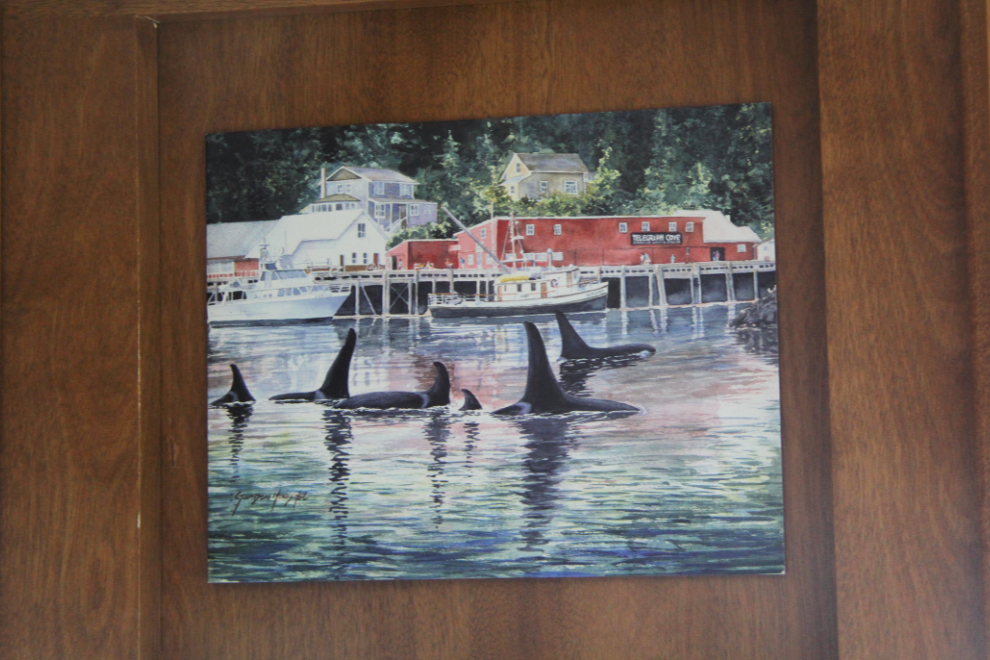Exploring Telegraph Cove and Beaver Cove, BC
We only had 21 hours at Telegraph Cove but absolutely loved it, as the 44 photos in this post will probably show. This is one place that we definitely will return to for a few days. The next time, it will be in September, while the orca are still there but the kids are back in school and the summer crowds have diminished. The crowds can apparently be quite overwhelming in peak season.
At about 3:30 on Day 22 (May 17), we set up camp in the nearly empty 48-site Telegraph Cove RV Park. We chose a site which had on ocean view to the north. A sign on the office wall said to pick a spot and an employee would be around either between 10:00 and noon or 4:00 and 6:00 pm.
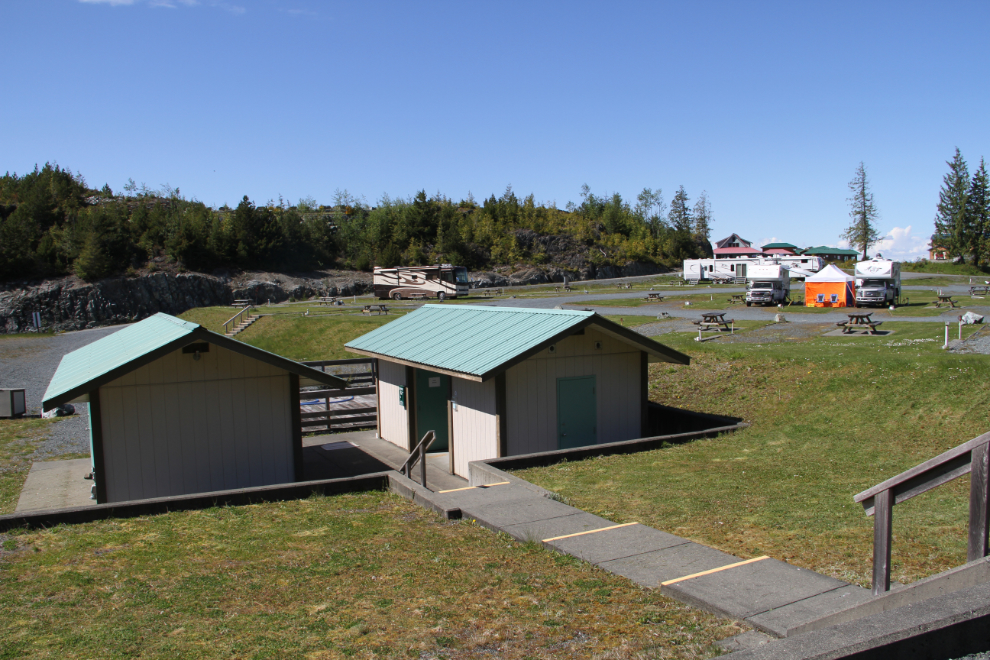
The marina which completely fills the cove was as empty as the RV park. The main accommodations at Telegraph Cove is Dockside 29 Suites. On our next visit we may fly down, rent a car, and stay there.
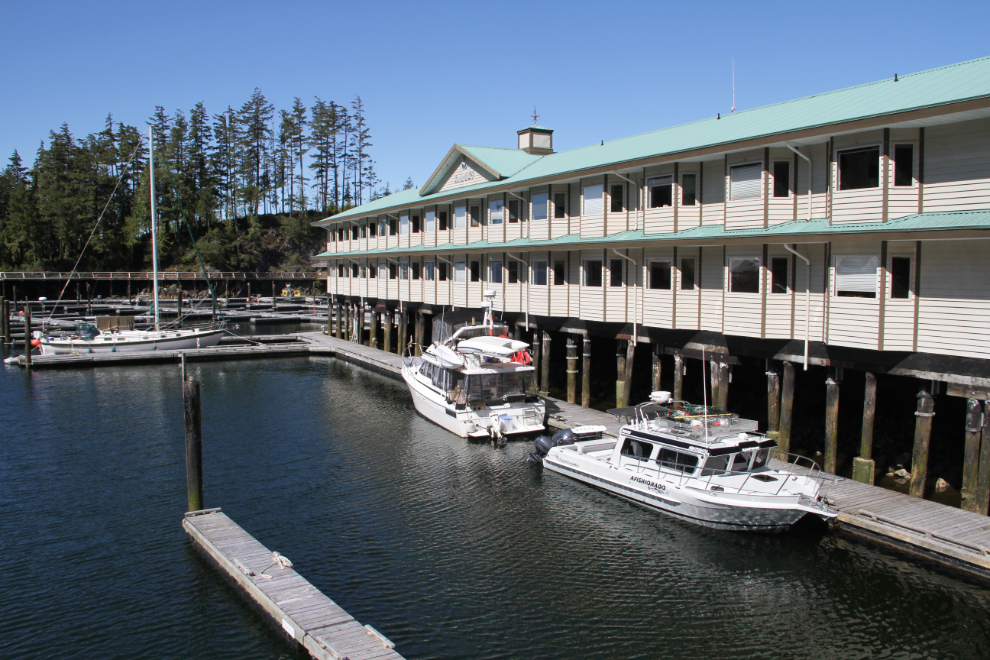
A substantial percentage of Telegraph Cove fits in one photo.
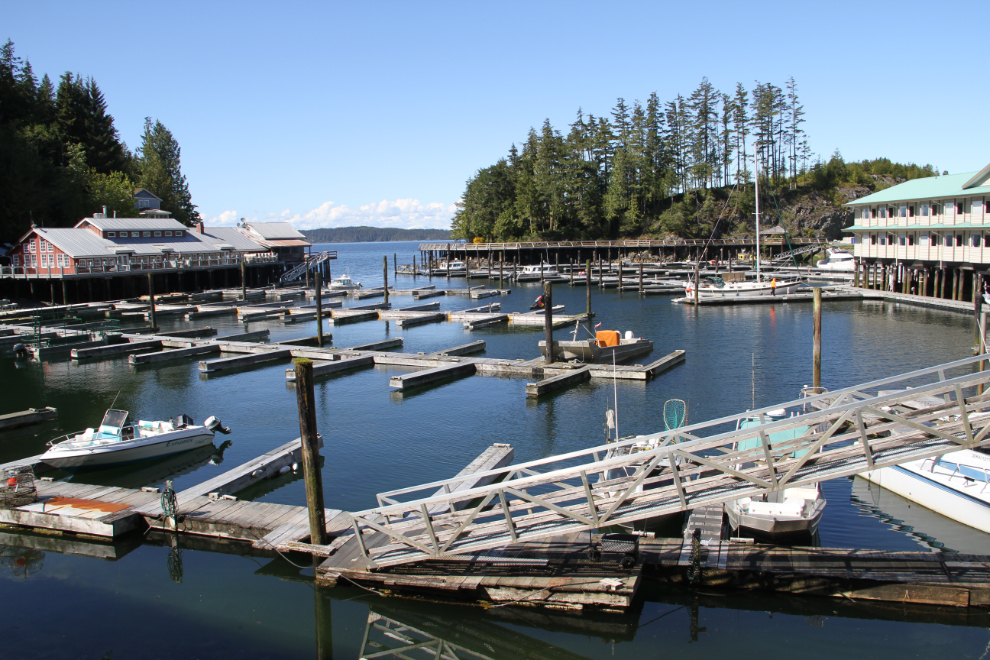
There are very good interpretive signs on or in front of most buildings along the boardwalks that wraps around the south part of the cove. The place certainly has an interesting history.
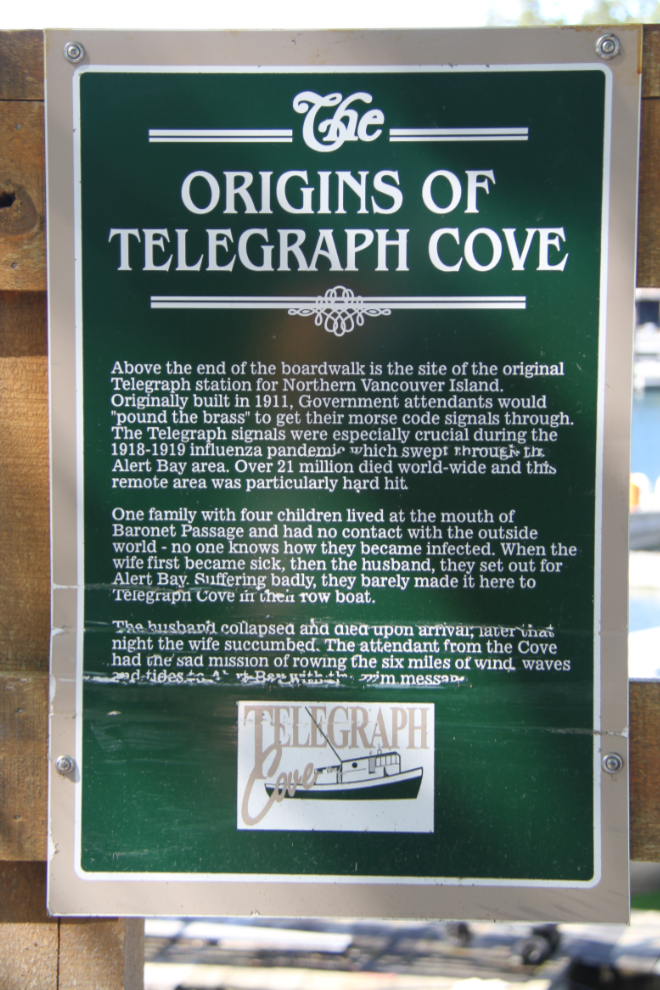
The name “Telegraph Cove” comes from the fact that a one-room station here was the northern end of a telegraph line that had been from Campbell River in 1912. During World War II, the Canadian Army took over the lumber mill that was operating here, and a crew of 65 men (up from the 12 that had worked for the private operation) greatly increased production for military needs.
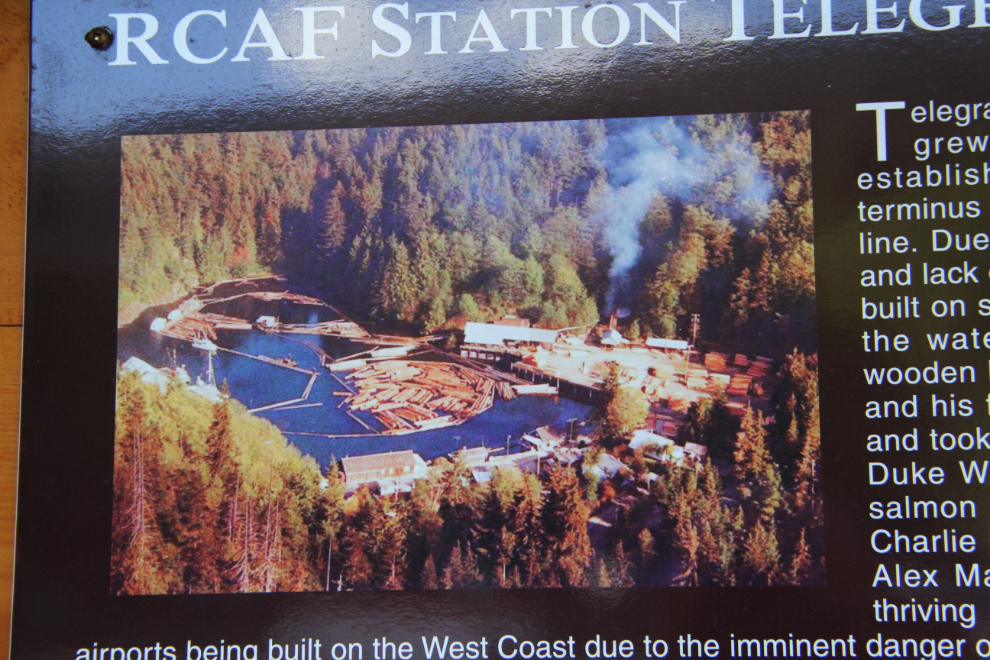
There are some interesting artifacts along the boardwalk, such as this locally-built 2-wheeled freight cart.
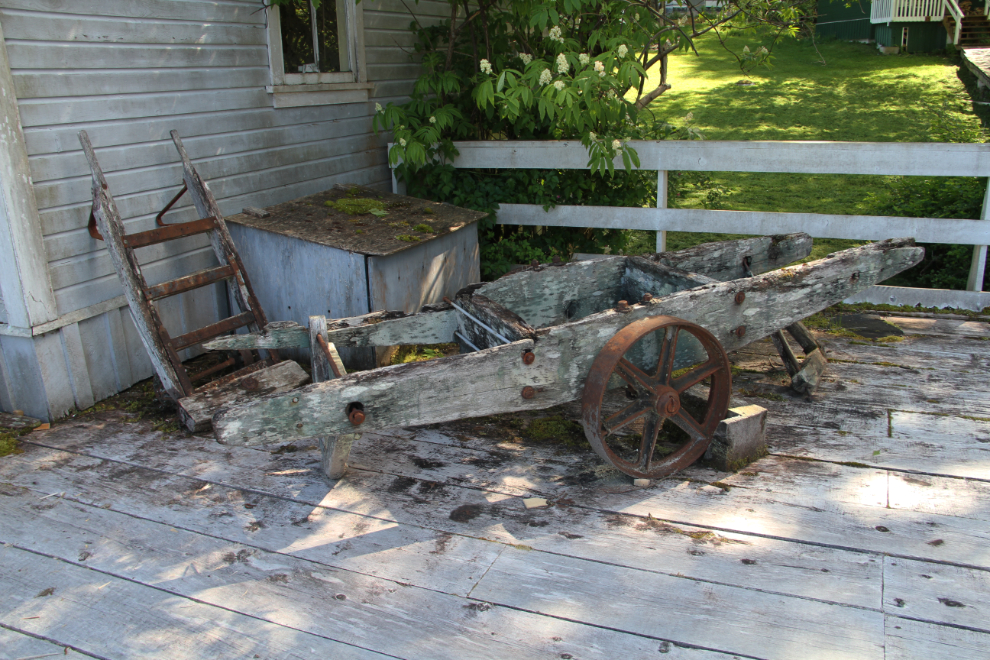
The “Broken Oar” sign tells a funny story about a pair of oars that been propped against a maple tree so long that the tree had grown around them. In 2009, though, a man broke one off to fight off a cougar that had attacked a small dog. He saved the dog, and the sign says “Feel free to use again to fight off cougars.”
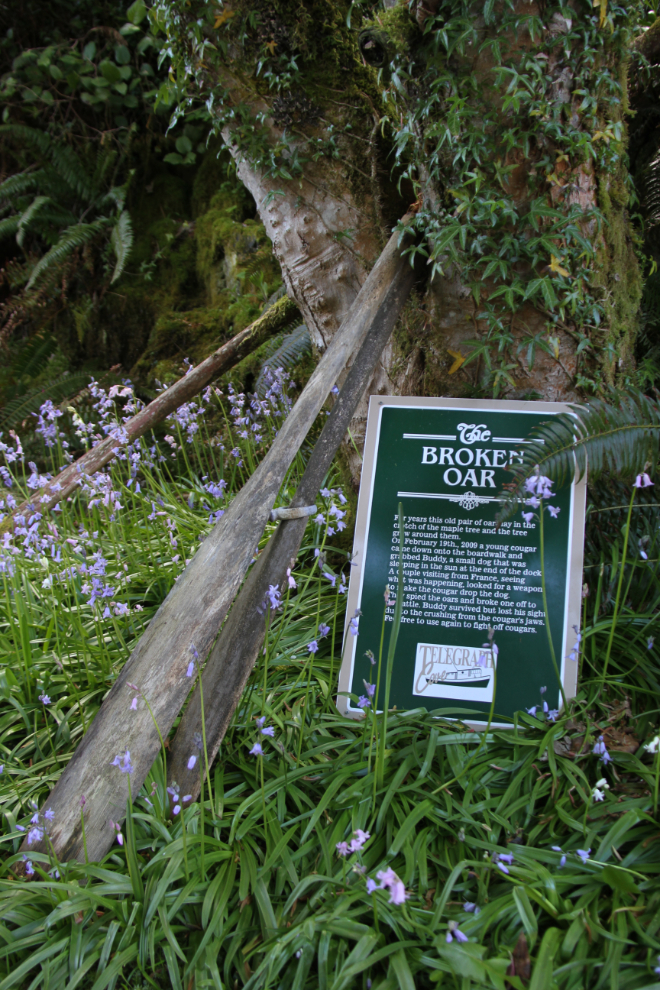
There are a few funny signs around Telegraph Cove. “PUSH. If that doesn’t work, PULL. If that doesn’t work we must be closed.”
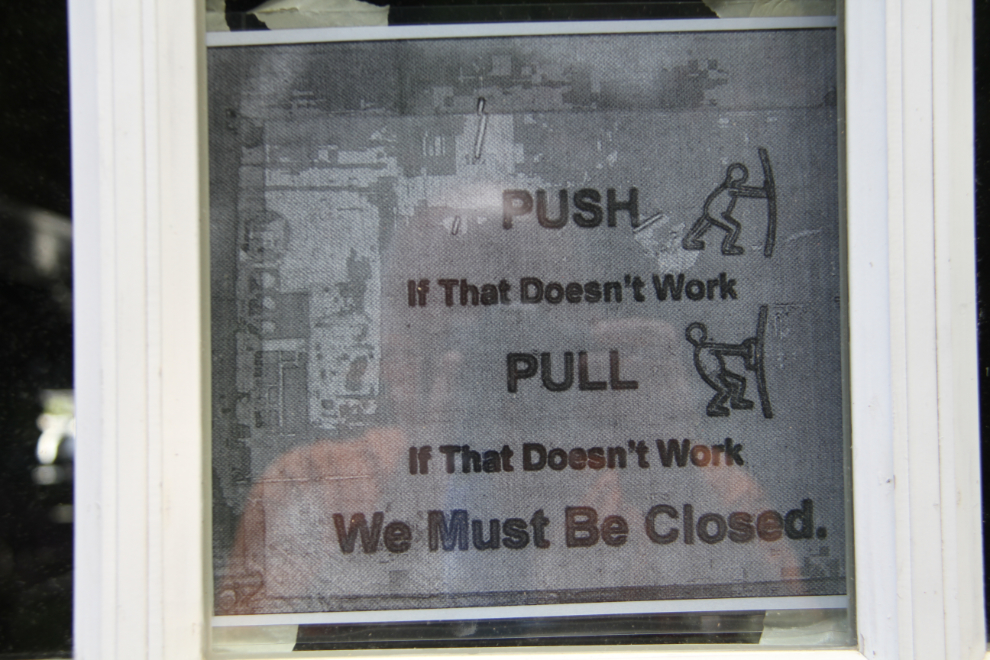
These old rock stairs lead from the boardwalk to a home that can be rented for overnight stays. A new and much wider wooden staircase is now the access to it.
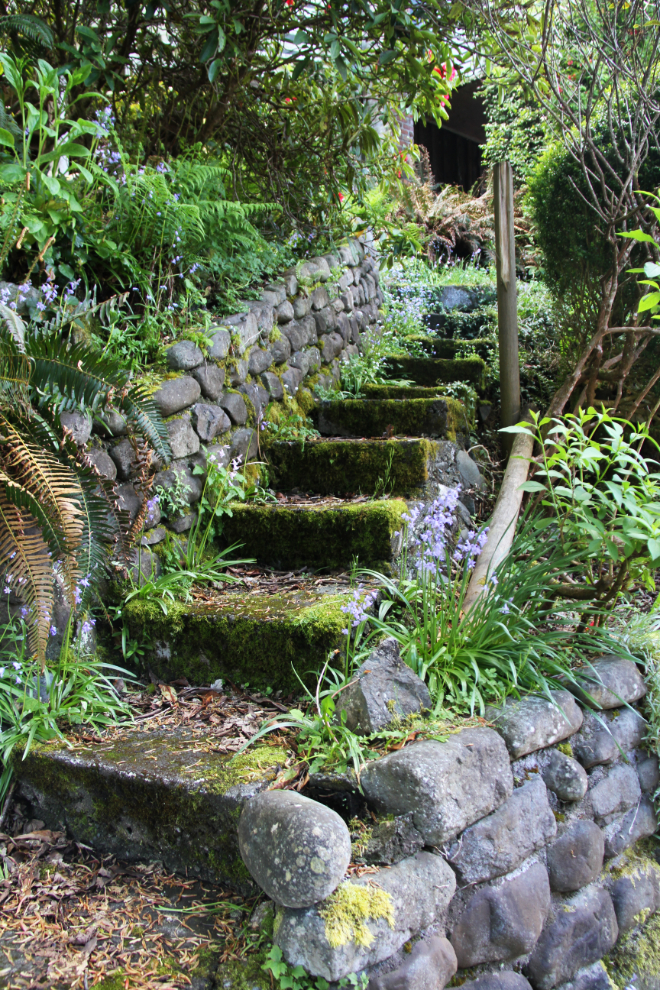
Wonderful windows in the old floating hospital that was drydocked along the boardwalk.
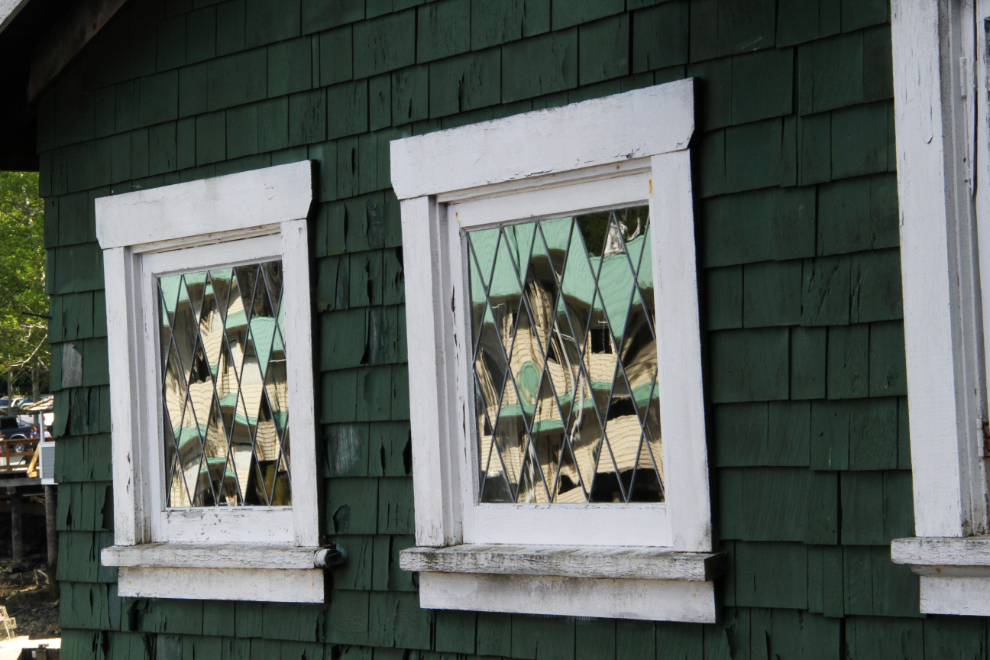
Orca viewing and fishing are the two main attractions for visitors now, but sea kayaking attracts many people and apparently the scuba diving is also exceptional. Orca motifs appear in many places, like this weathervane on the The Killer Whale Cafe and Restaurant.
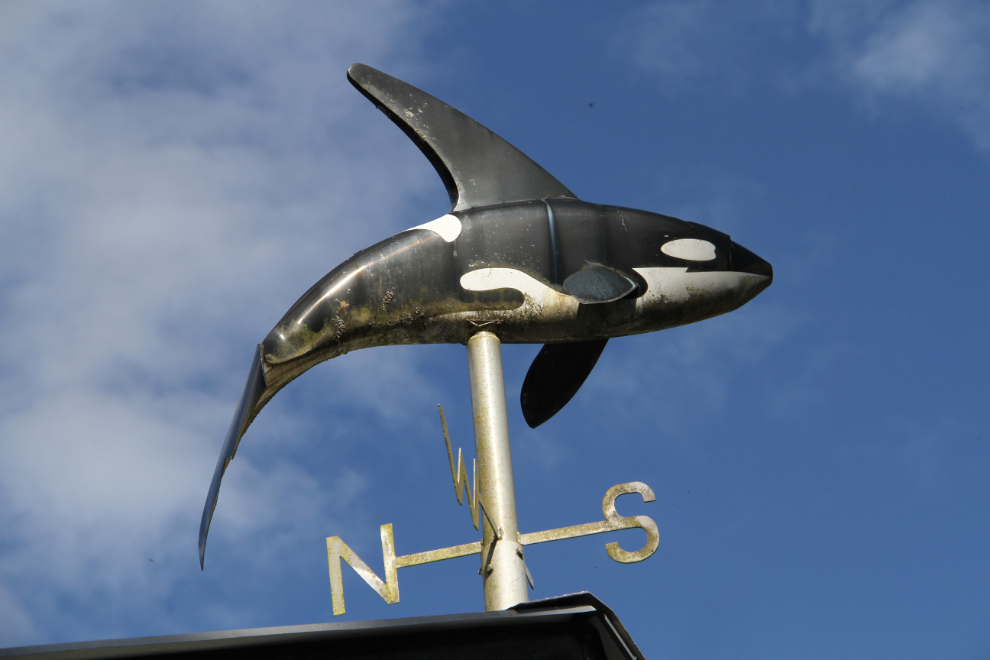
The general store, which we’d return to the next day.
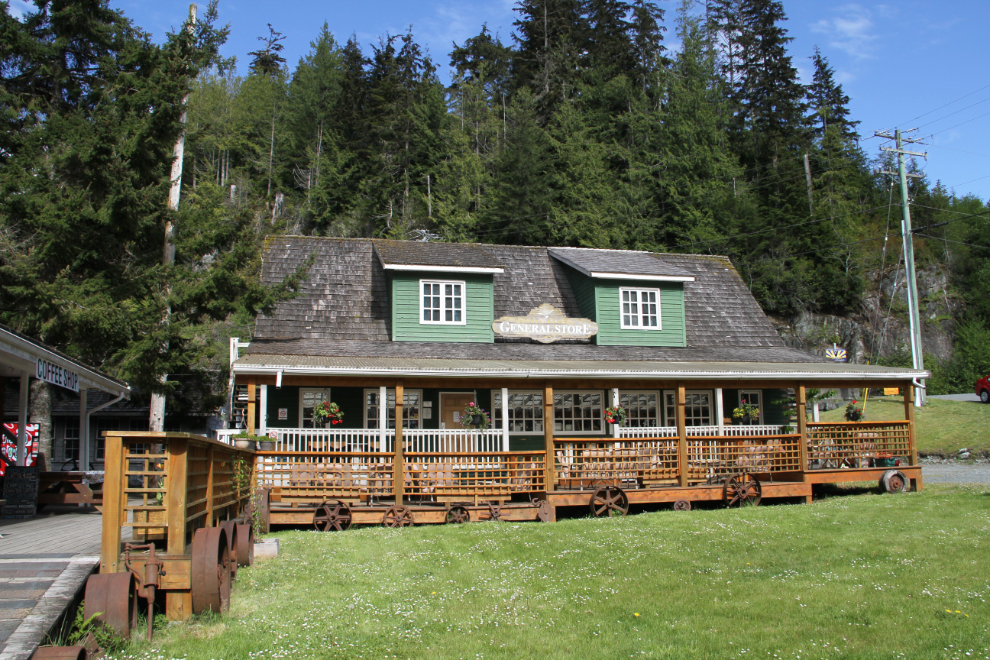
Outside the resort office, Cathy was happy to add “Whitehorse, Yukon” to the “Where Are You From?” board.

Tucker chilling on the grass back at the RV, wondering what the next adventure would be 🙂
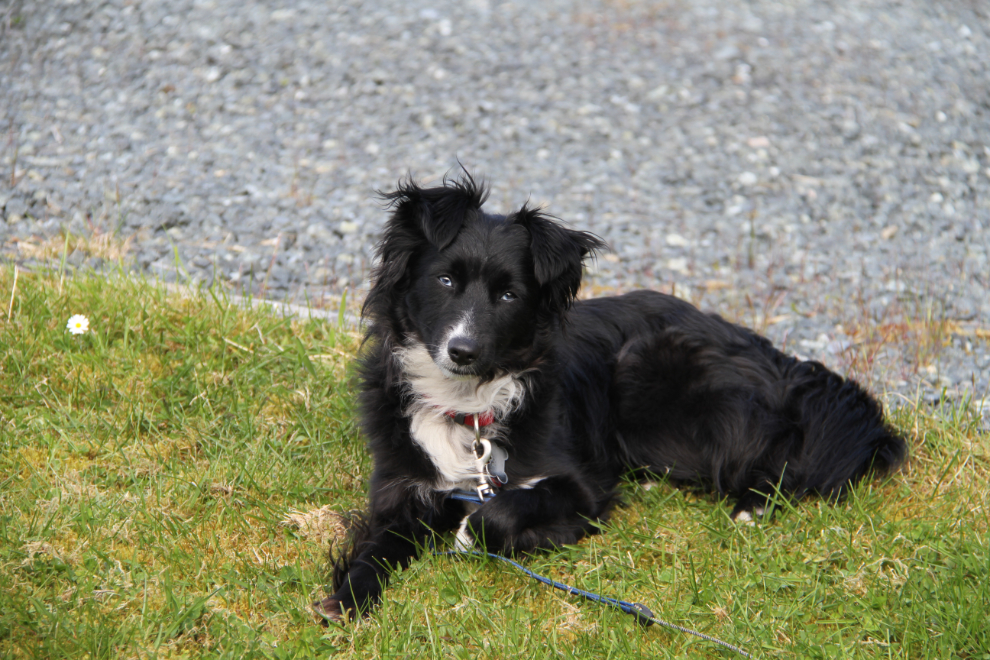
That evening, we returned to the boardwalk and went to The Killer Whale Cafe and Restaurant for dinner. We got a table with window overlooking the cove – only one other table was occupied. I had a seafood fettuccine that was truly one of the finest meals I have ever had. Someone later commented how expensive the place was and I replied that the price (our total was $131 with tip) was comparable to what you’d pay for that quality in Vancouver.
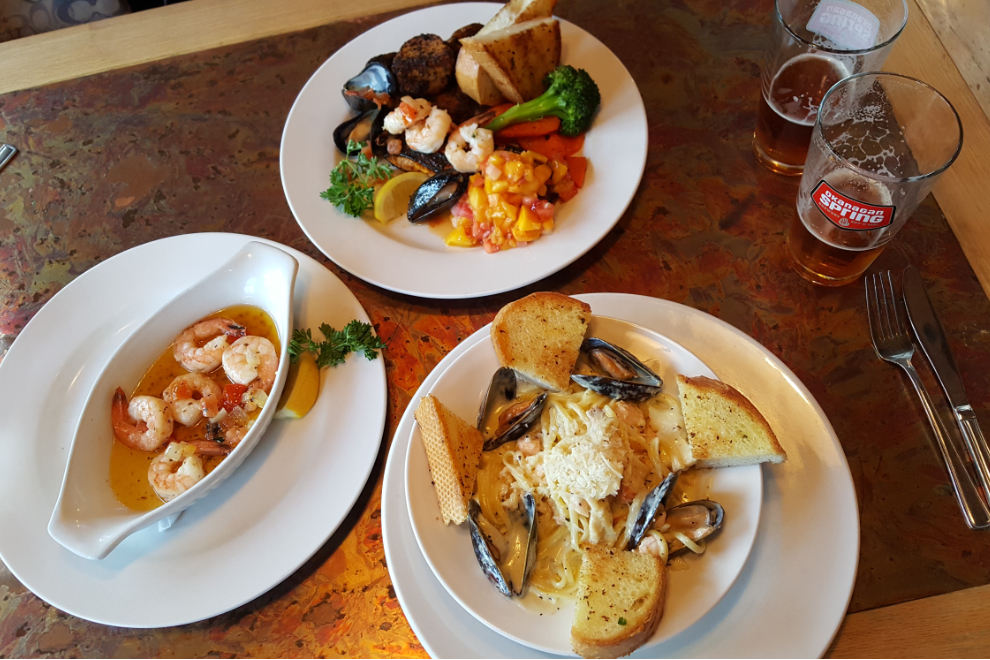
Sunset over Telegraph Cove – the view on the way back to the RV after dinner, from one of the many parking lots.
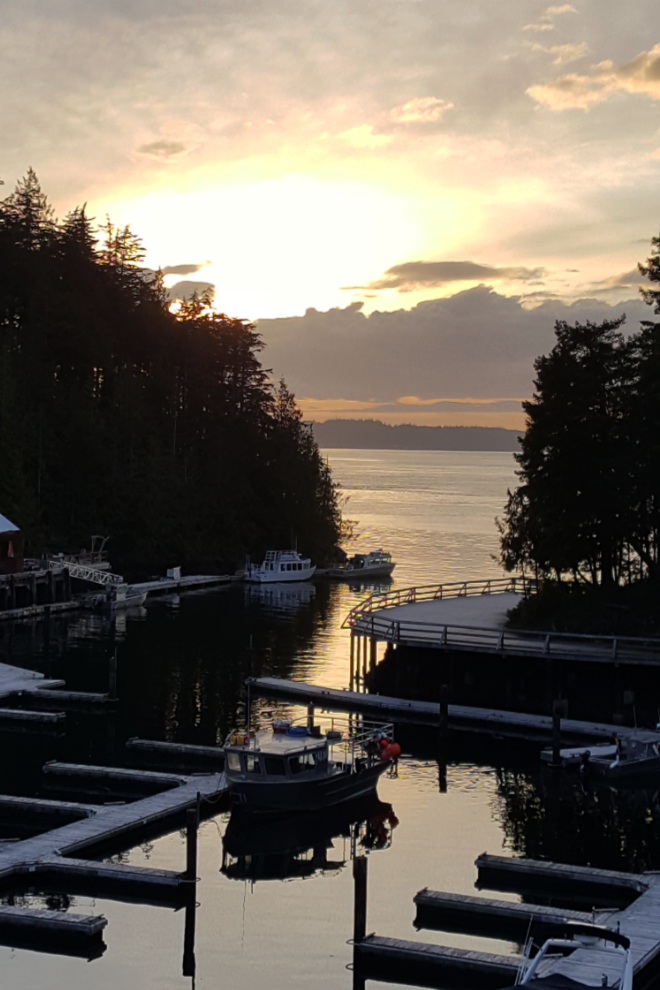
Some of the sentinels guarding us, at 9:30 pm.
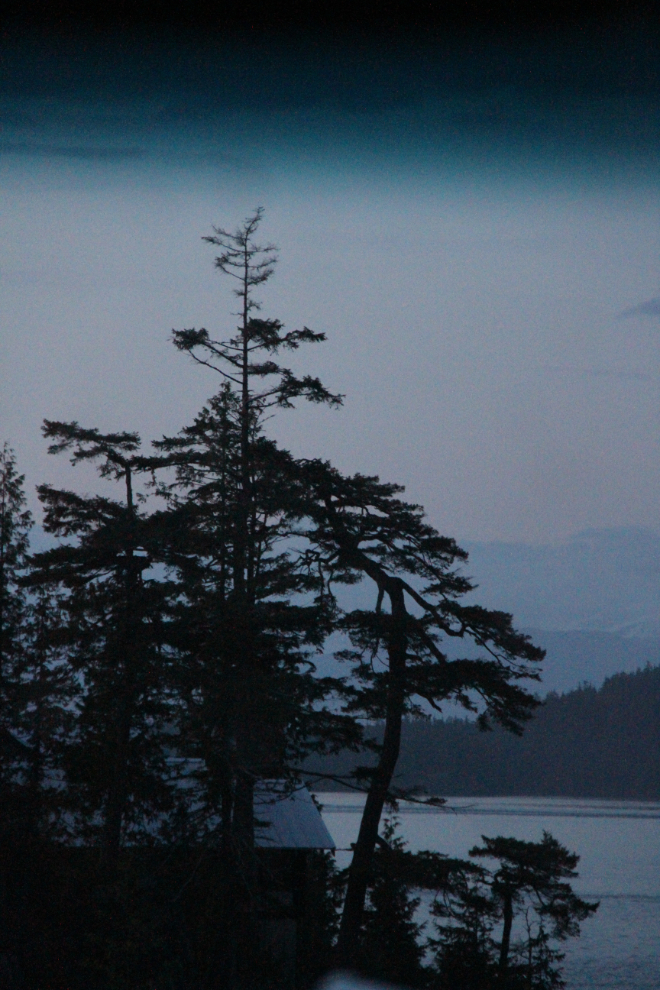
I was out exploring more of Telegraph Cove at 05:30 the next morning. In the foreground is a protected lagoon.
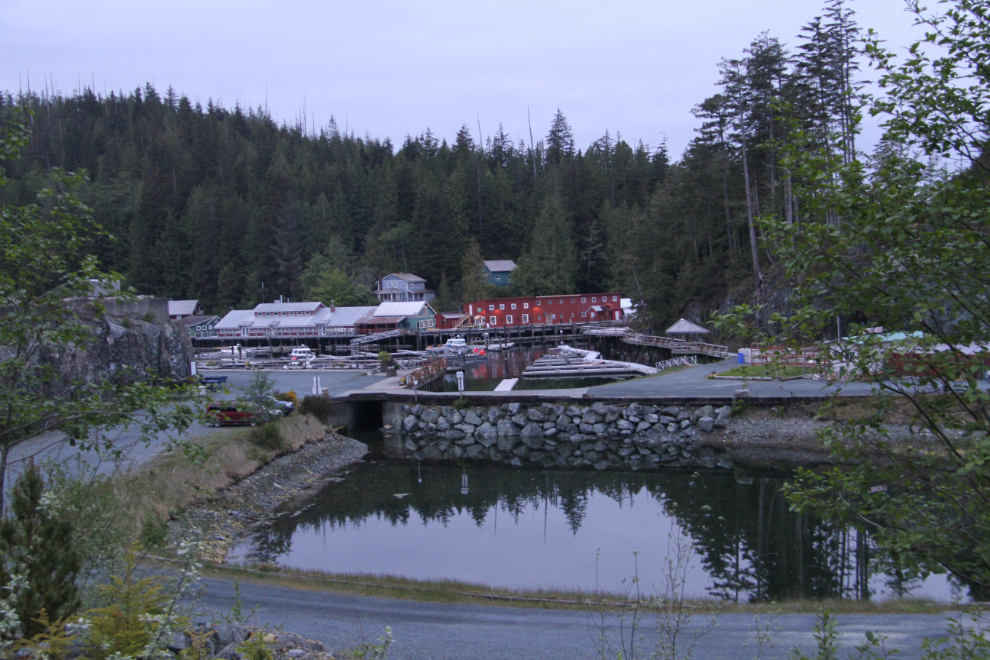
By 09:00 I was in the mood for a walk, and decided to go to Bauza Cove. I had only the vaguest directions to the trailhead – it starts in the back corner of the Forest Campground.
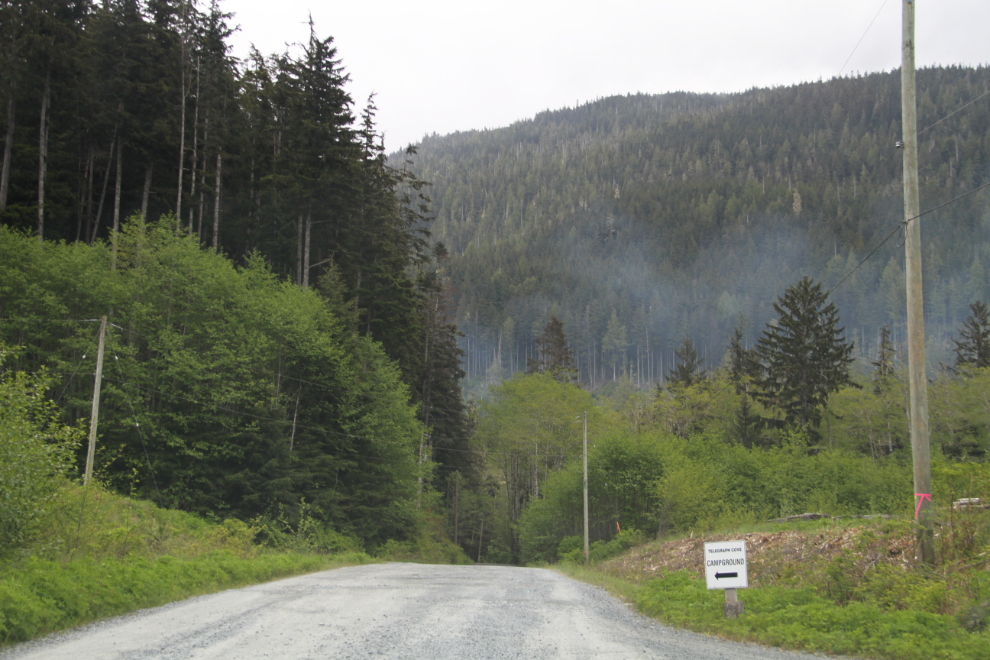
There are lots of permanent residents in the Forest Campground. I found the Forest Campground to be dark, dreary, even claustrophobic, but my niece, who suggested this trail, prefers it to the RV park we stayed at.
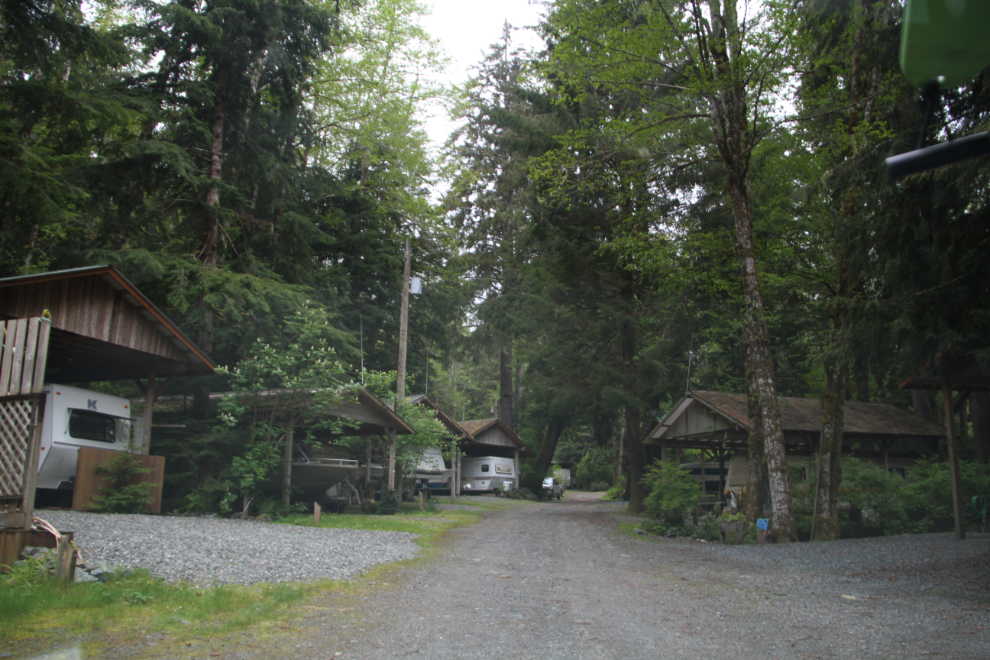
The trailhead might be down there, but the Blinkhorn Trail is clearly marked so I decided to walk some of it instead.

The campground provides parking for the the Blinkhorn Trail, at site #78.
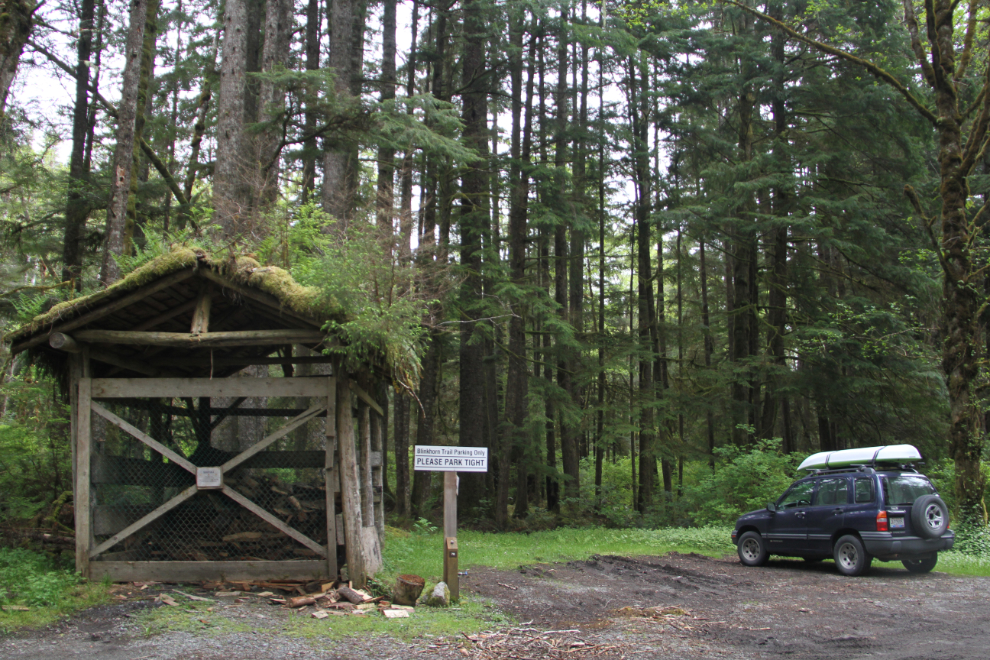
One of the signs at the trailhead is a biography of Dave Farrant and the trail’s history. It says that because the trail was largely built by Dave Farrant, it was re-named in his honour after his death in 2014. The trail is rough, but many assists have been built in, from board ramps with wire mesh traction mats, to rope assists.
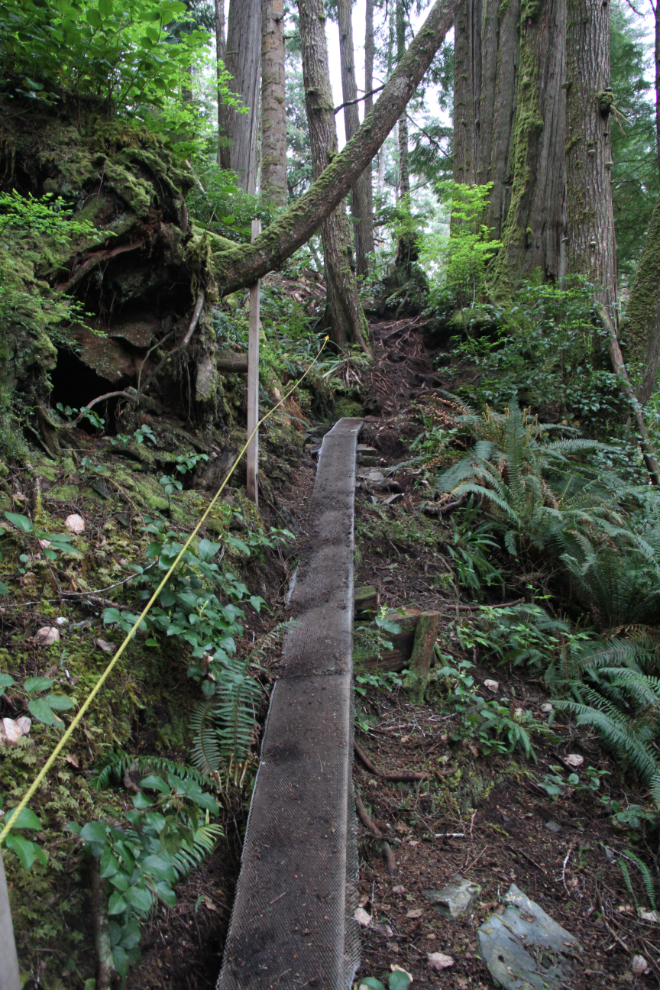
It wasn’t clear what a “Cultural Tree”, or “culturally modified tree” is, but a display in Alert Bay uses that term to describe a tree that has had bark removed to make various items. The trail was so rough that a couple of minutes past this spot, about 7 minutes into the hike, Tucker said that he’d had enough. He simply refused to continue even when I tried to talk him into it. So, we turned back. I wasn’t really equipped for a trail like this anyway, and I had a nag that Tucker just may sense the presence of a cougar.

From there I drove back to a viewpoint overlooking the dry-land sort that we’d passed on the way in. This is the Englewood operation of Western Forest Products, located at Beaver Cove, and the’ve done a good job of explaining what’s going on below, with three large interpretive panels.
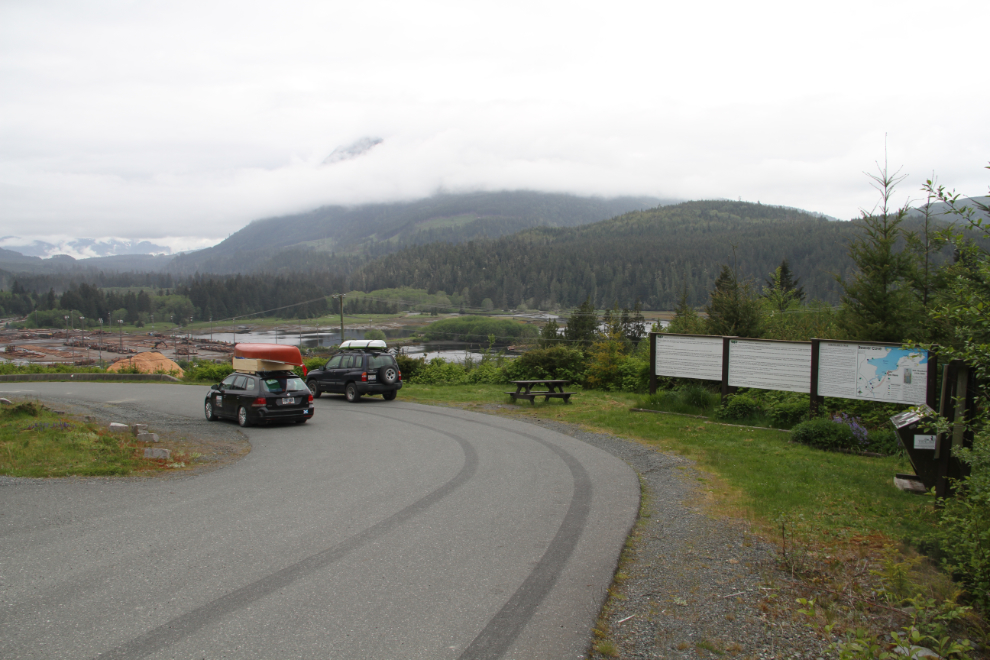
On the left is the Telegraph Cove Road that we came in on.Beside it is the Nimpkish Valley logging railway, which was built between 1920 and the 1940s. Logs arrive here either on the railway or by truck.
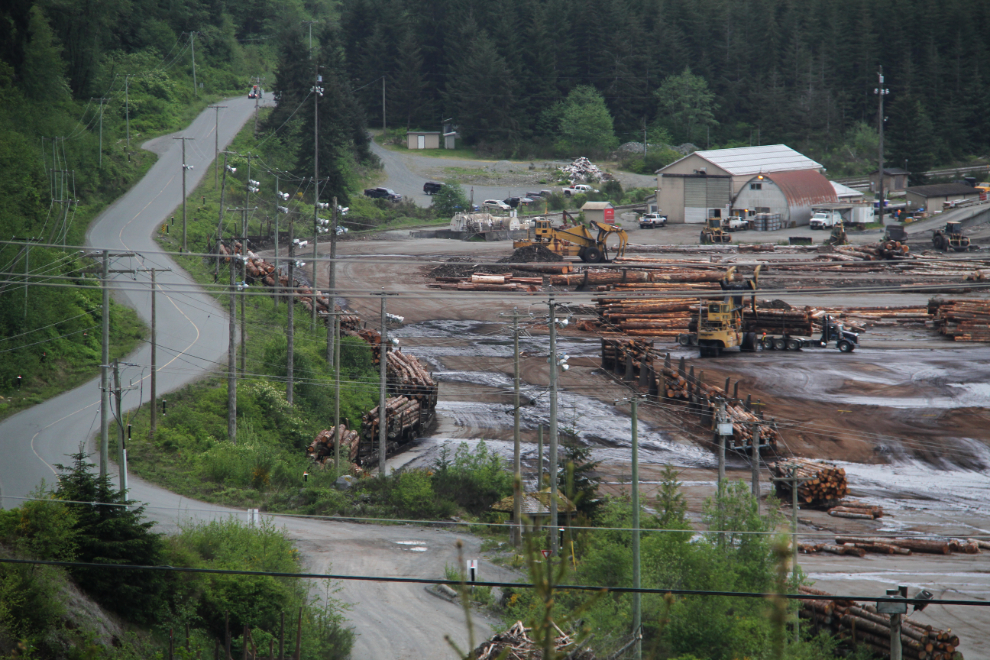
Logs are individually graded and assigned to specific bundles that are made up. These bundles will be dumped into Beaver Cover to build booms or rafts with.
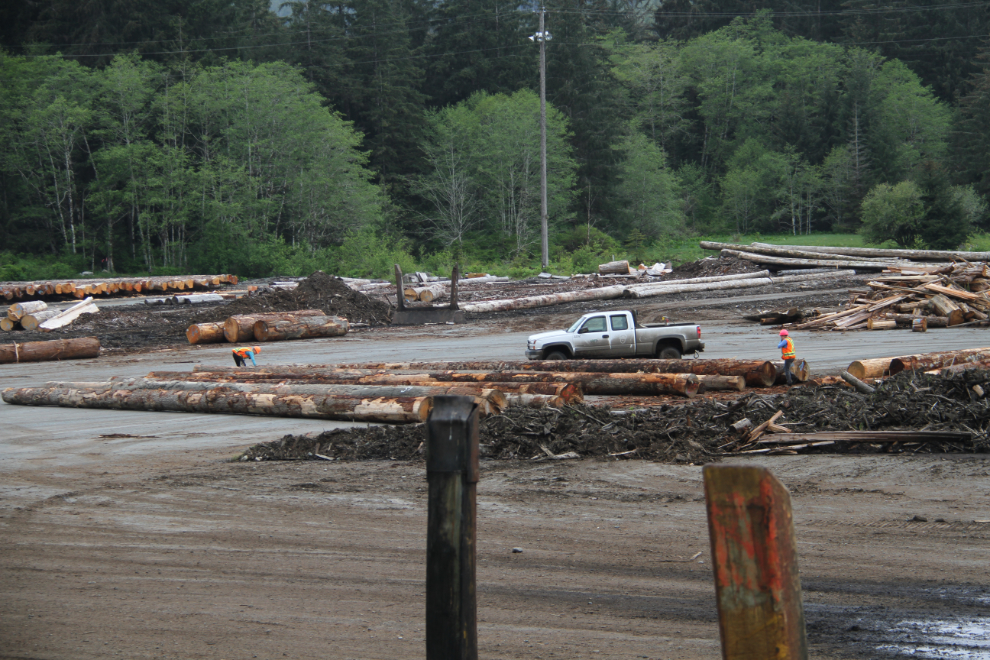
These log carriers can handle 60-ton loads.
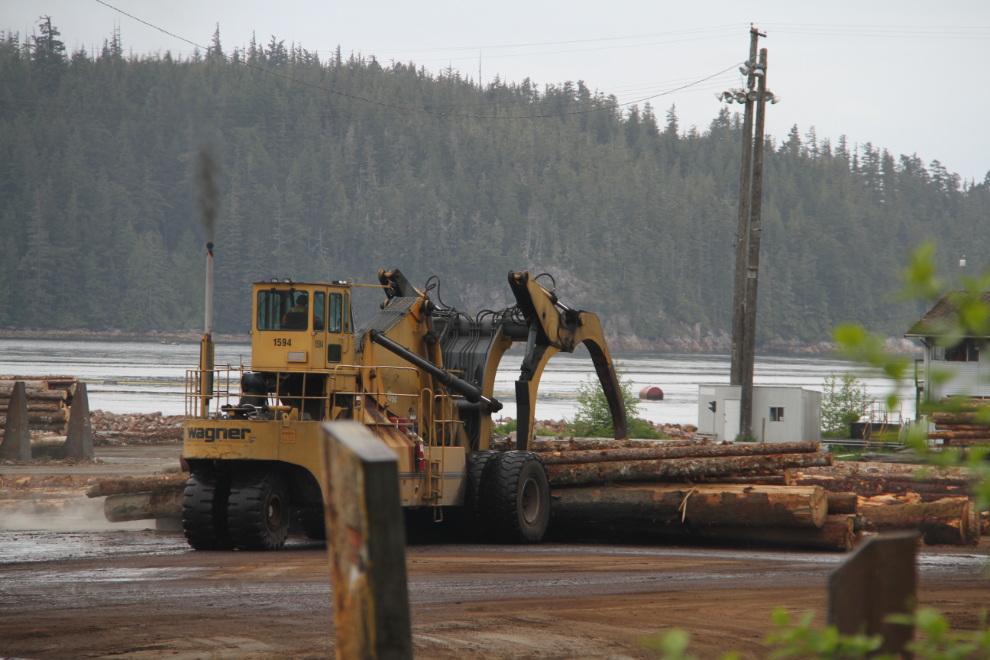
Once the log bundles are dumped into the water, boom boats build the booms, which are 21 meters wide by 121 meters long (70×400 feet). Finally, up to 12 booms are tied together and towed south by tugs. Most will end up at Western Forest Products mills in southern BC.
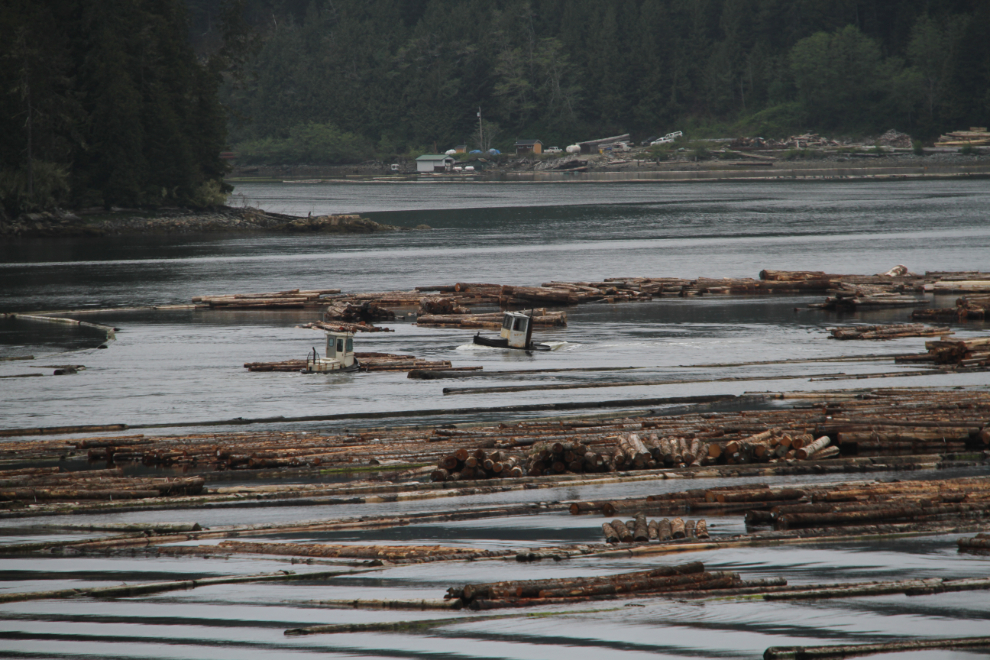
Sawdust from the operation is mixed with waste from a local fish processing plant, and then composted to make soil for gardeners. Coaser wood waste is used for chips and hog fuel.
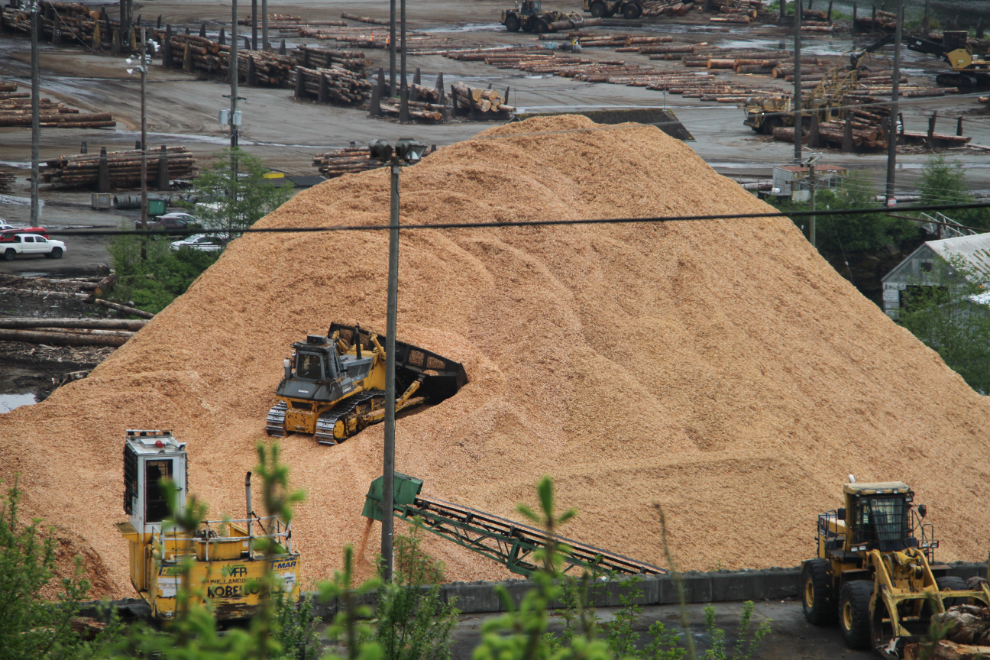
I wasn’t finished with walking yet, so returned to the heart of Telegraph Cove for more exploring. The next photo shows the Ogawa House, which was built in 1931 by Konoshin Ogawa after he got married in Japan and returned with his wife. They had 5 children, one of whom was born in this house while Mrs. Ogawa made it to the Alert Bay hospital for the other 4 births.
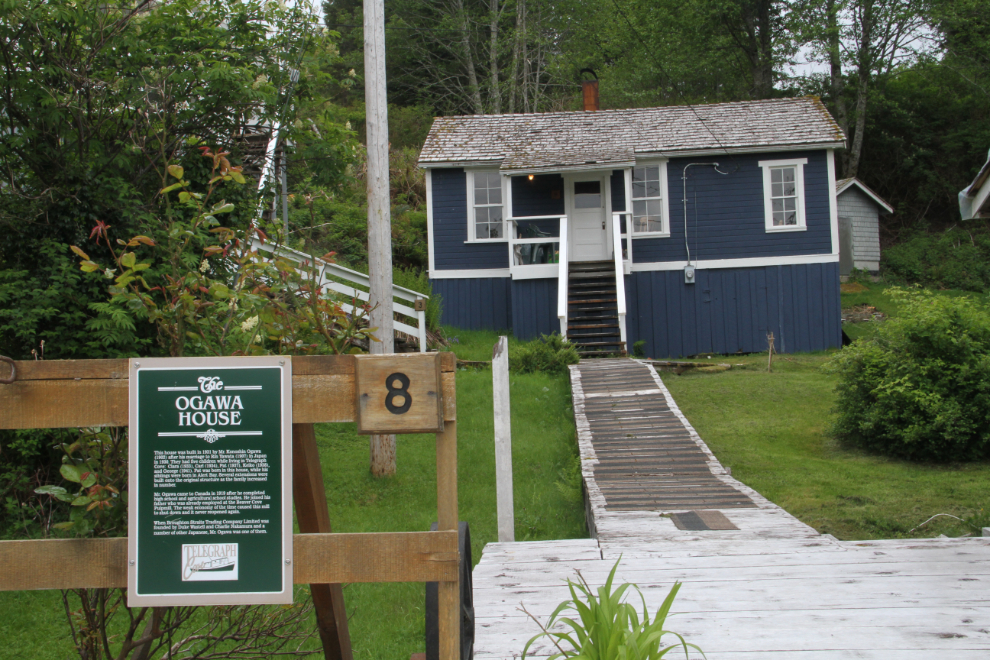
A Mr. Nakamura, who owned several seine fishing boats, lived in this house. He built a traditional Japanese bathhouse next to the house.
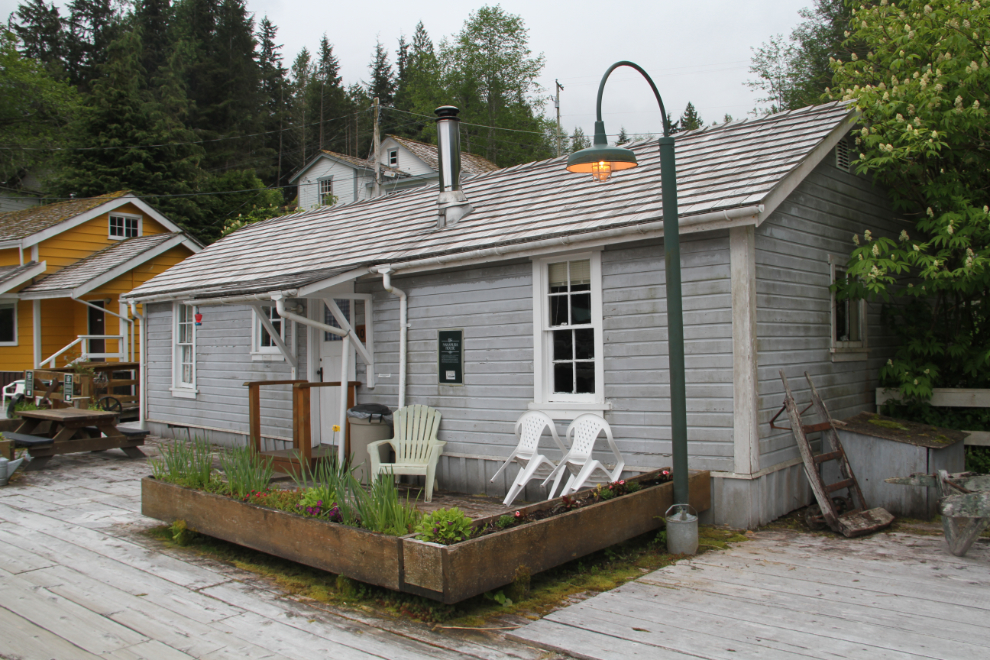
This large bunkhouse was built by the RCAF in 1942 to house their mill workers. With modern amenities including flush toilets, it replaced a small bunkhouse with an outhouse that simply set its occupants out over the water so the tide could do the flushing.
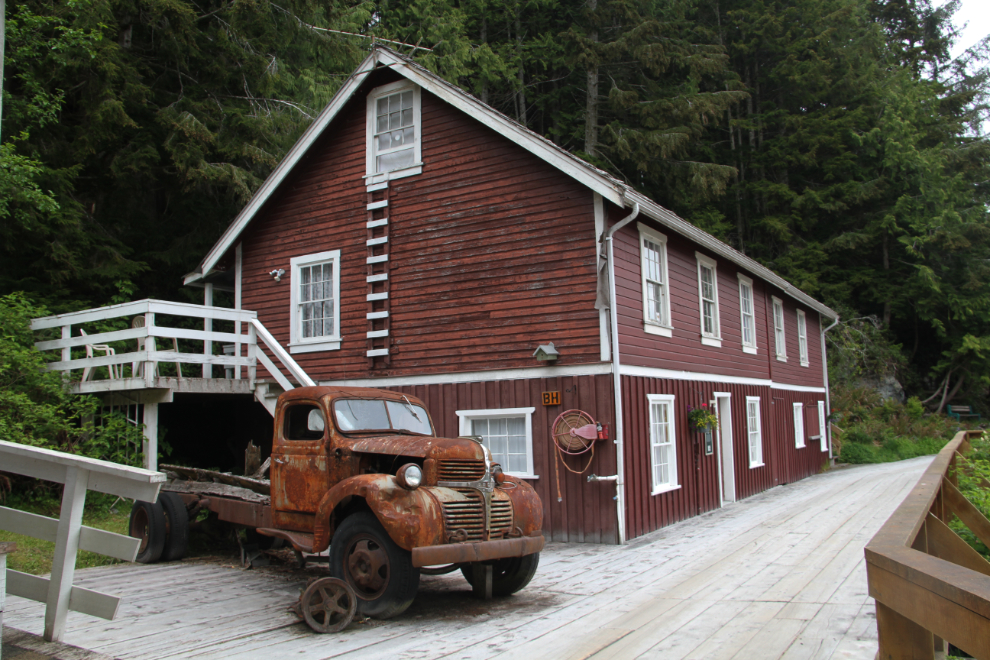
I was back at the RV at about 10:20, but didn’t stay long. Just past the RV park is a group of nice homes that obviously overlook the ocean. Between them and Telegraph Cove is a rocky ridge that intrigued me. When I told Cathy that I wanted to see what was on top before we leave, she thought that I was kidding 🙂
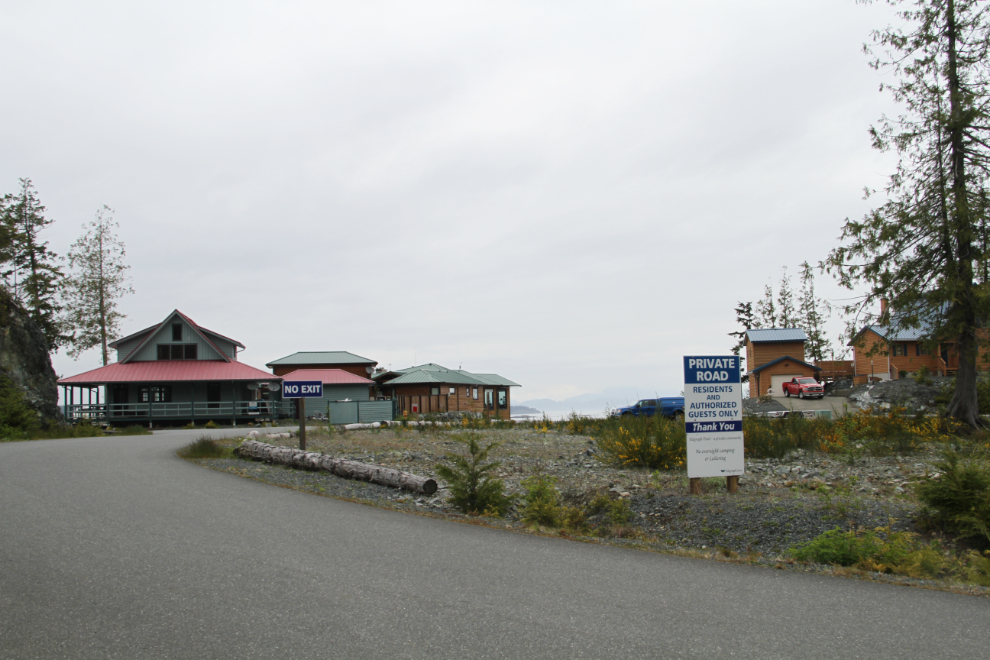
What I found was not only a nice view of the RV park…
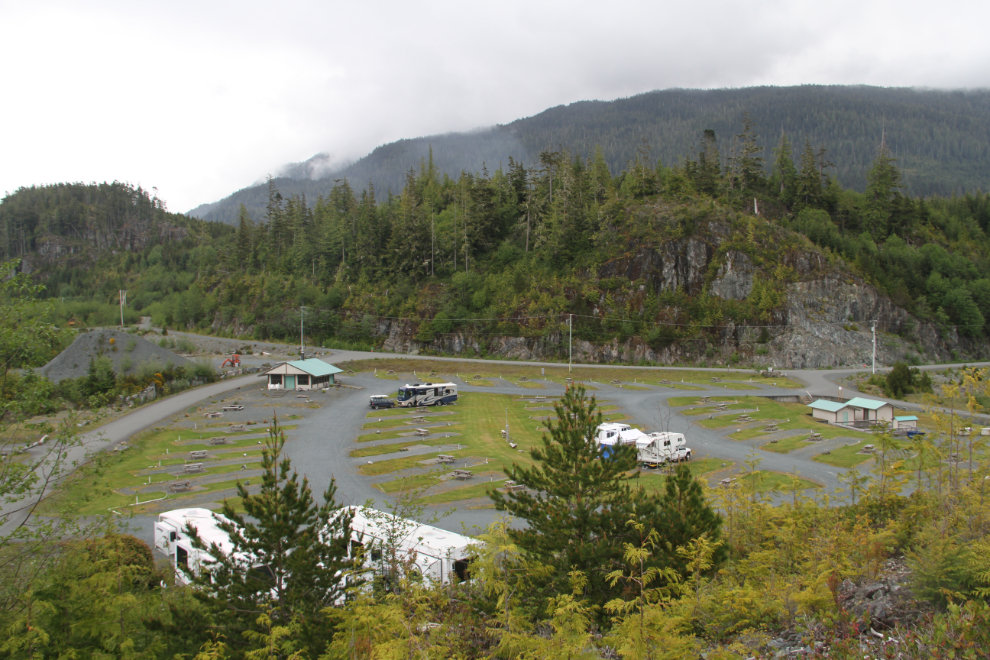
…but also a subdivision of spectacular view lots. An enormous amount of money has been spent on developing them, but for some reason the subdivision project has been abandoned.
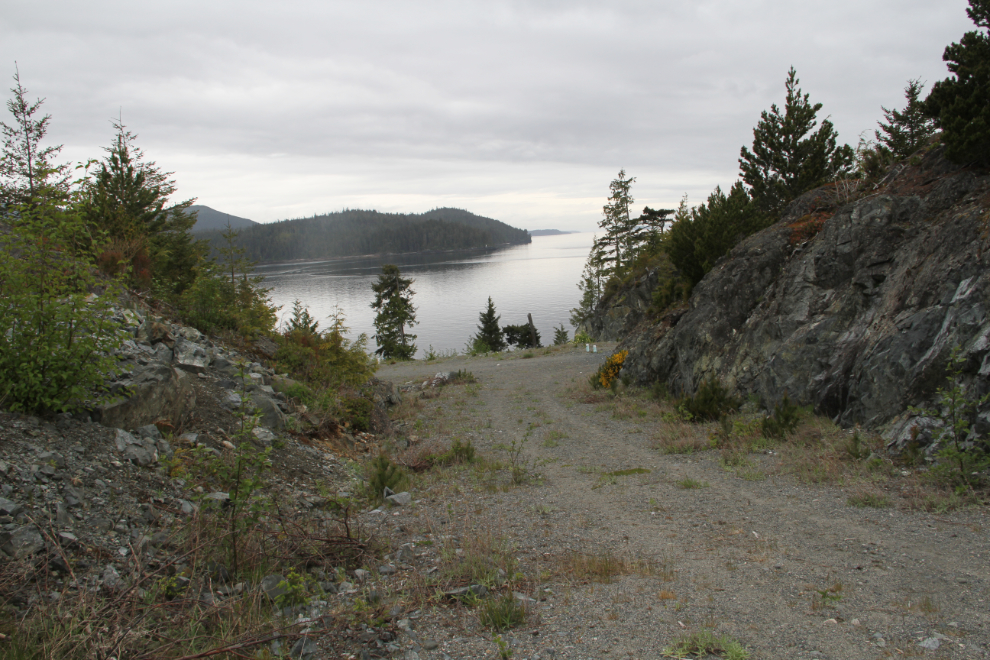
Our last stop before leaving was the Whale Museum and Interpretive Centre, and it turned out to be far better than I had expected.
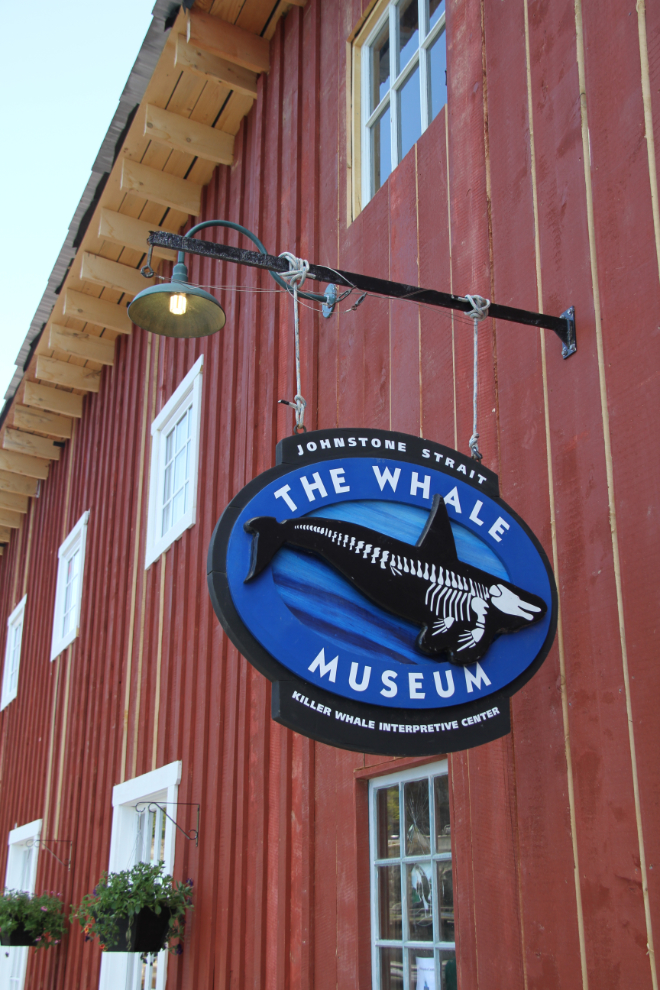
The talk at the centre begins at this chart which lists all of the resident orca of northern Vancouver Island. The guide, Emily, quickly showed her passion for the subject, and did an excellent presentation throughout the centre.
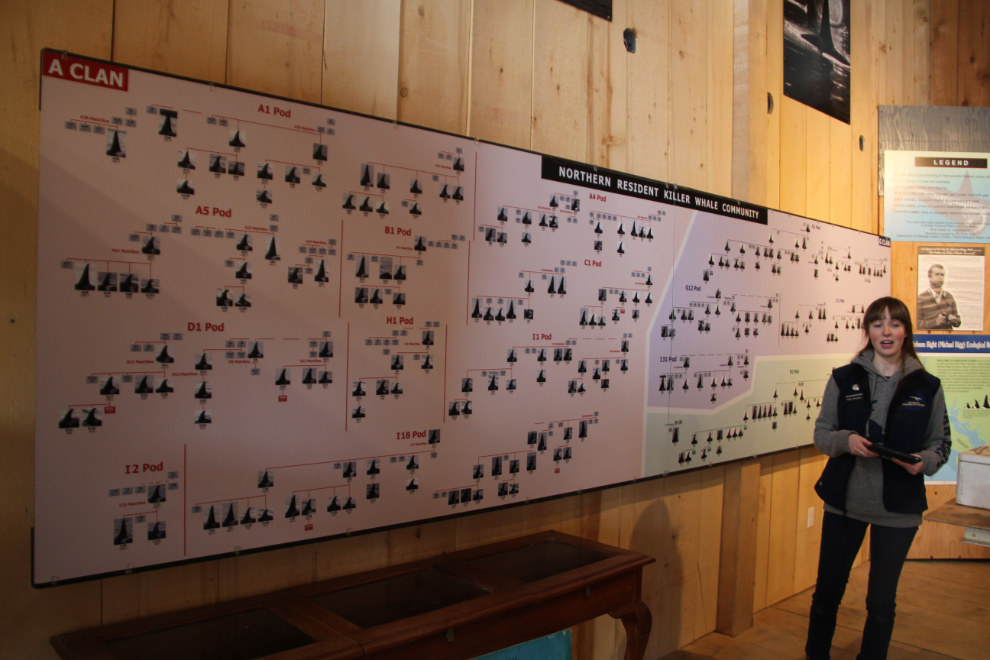
A sea lion skeleton.
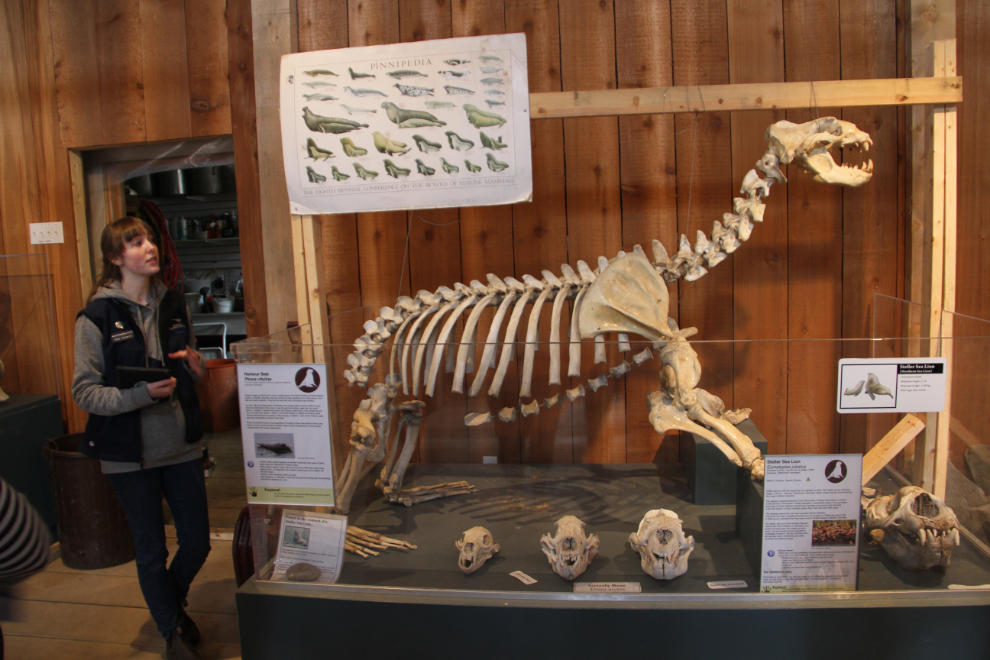
Because of the air bubbles in it, this whale bone weighs almost nothing.
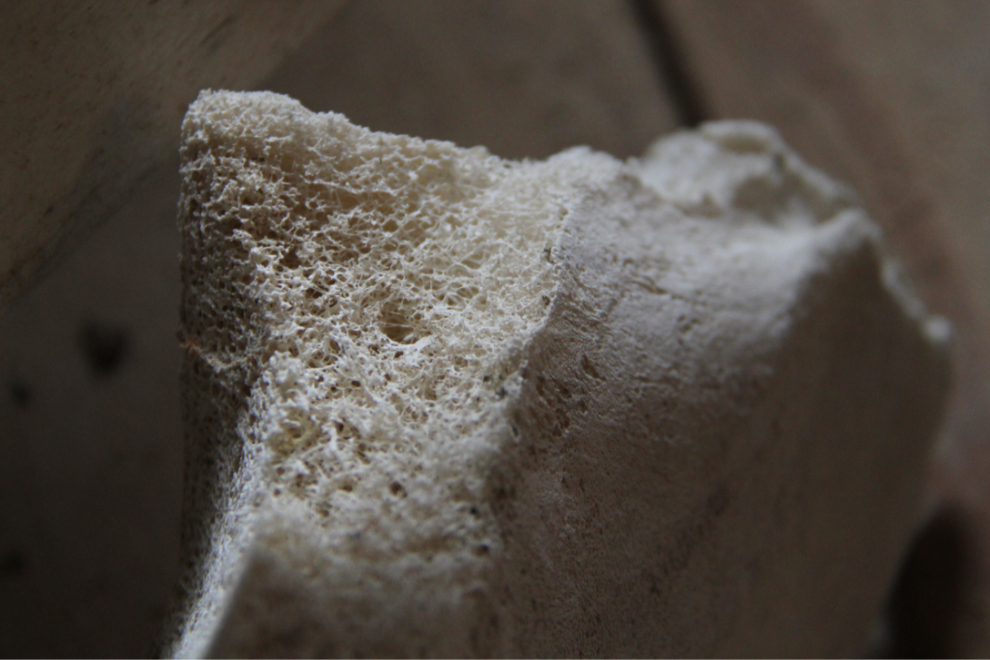
The centre is filled with displays, including several whale skeletons. The largest, a humpback, is still being assembled now that the building has been enlarged to house it. We spent about 45 minutes learning about marine mammals of all sorts, then it was time to leave. We were already about an hour past RV park checkout time, though with nobody around it didn’t really matter.
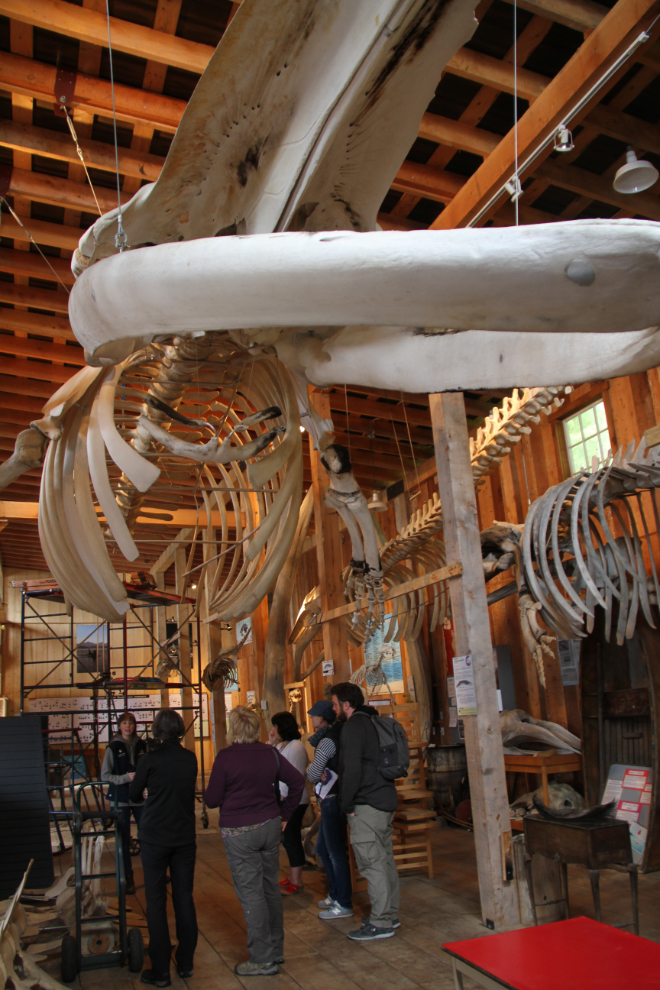
One last look at the sea from the mouth of Telegraph Cove. We really didn’t want to leave, but…
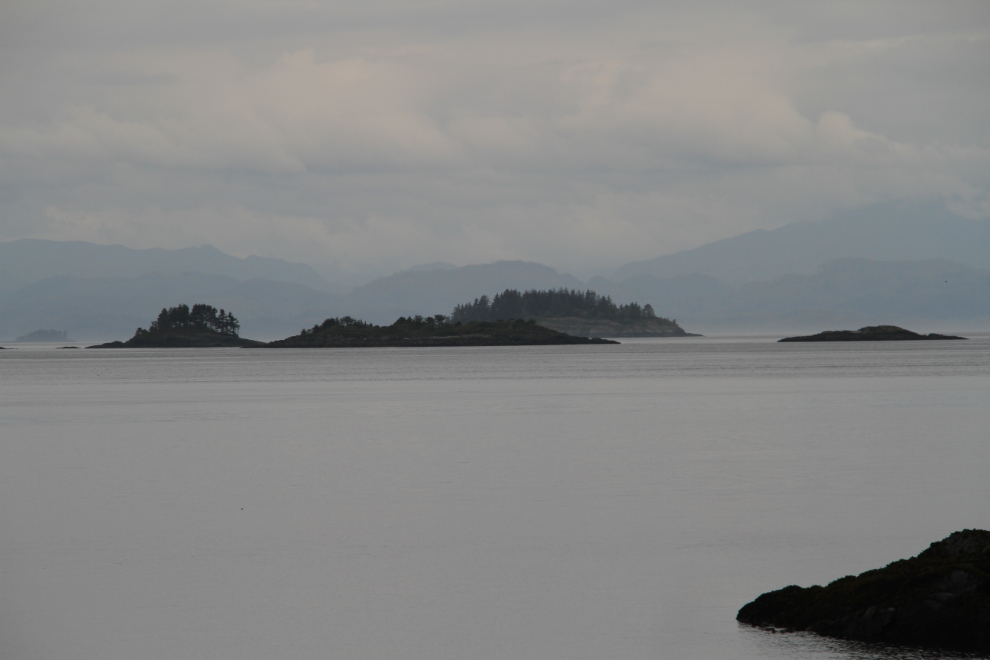
We went back to the general store on the way to the motorhome. Cathy found a pair of shoes that was just too perfect to resist, and I found an art print that we both really liked.
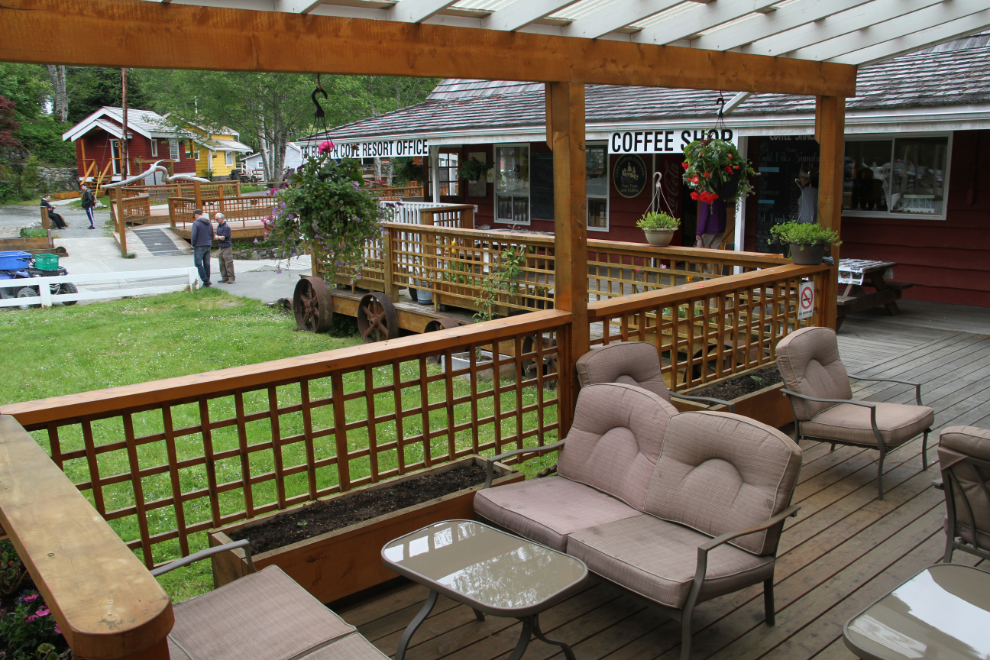
On our way to Port McNeill finally, at 1:25 pm. When I have a chance (in the Fall probably), I want to find out more about this logging railway.
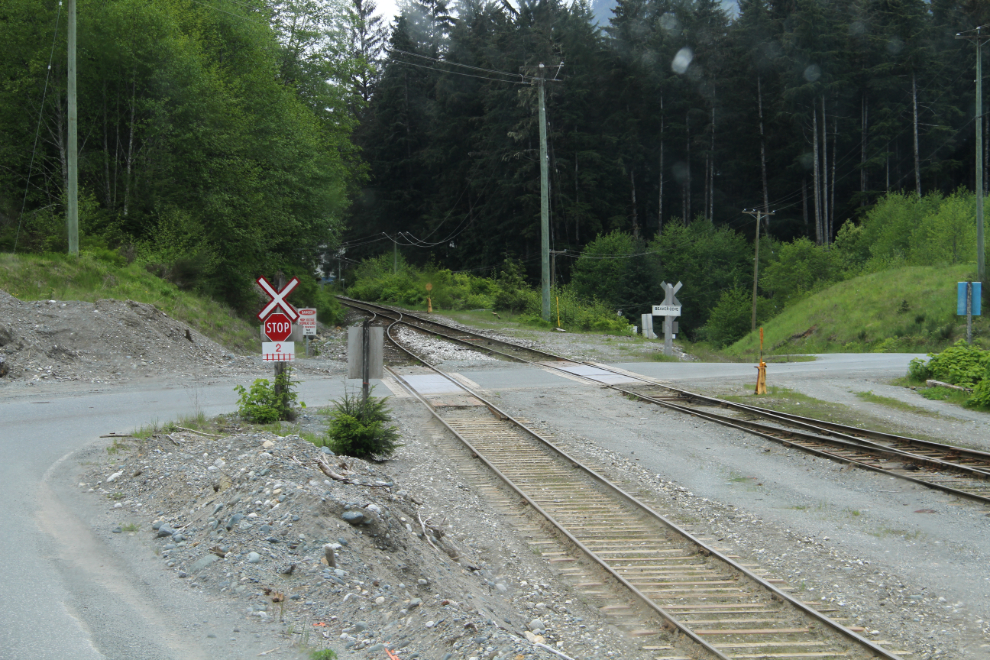
We’ve hung our first piece of art in the motorhome, to remind us of how much we love this place. This painting of orca in Telegraph Cove is by Gordon Henschel of Port McNeill.
